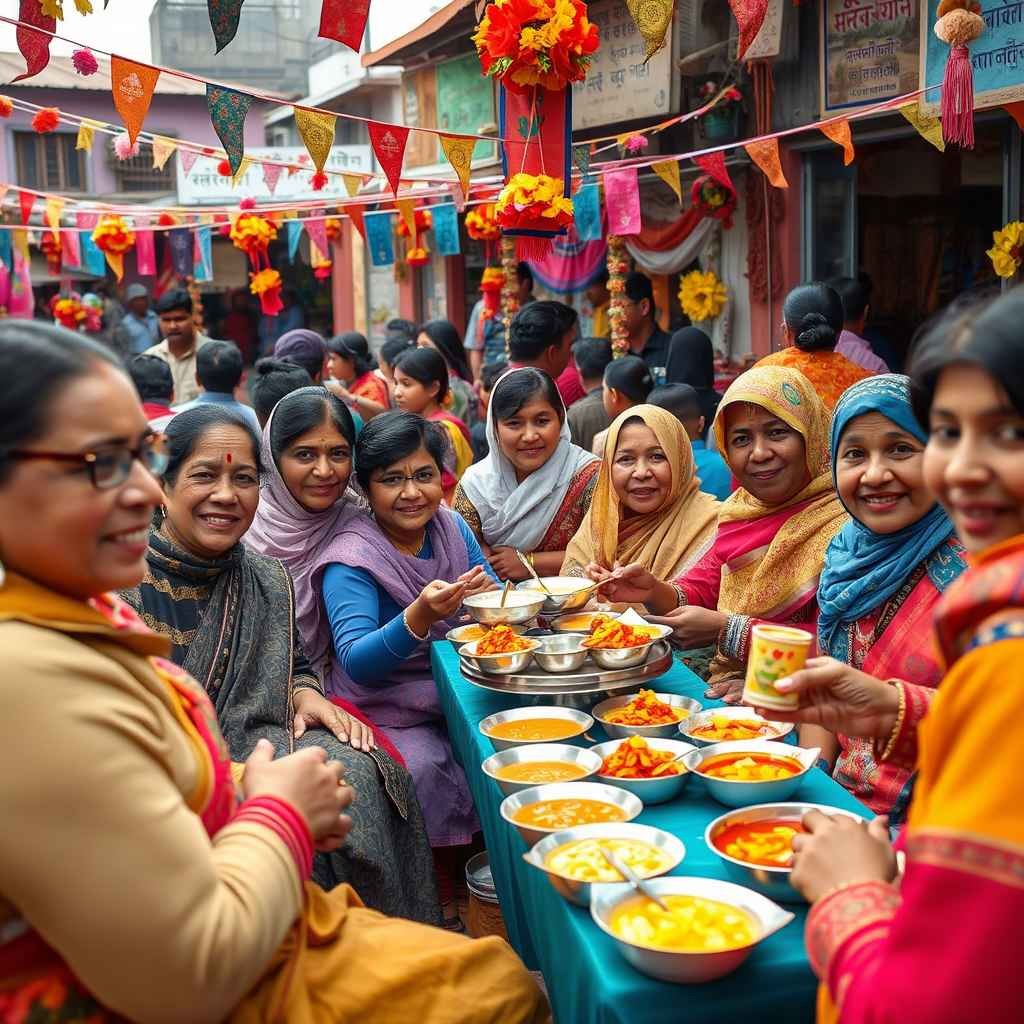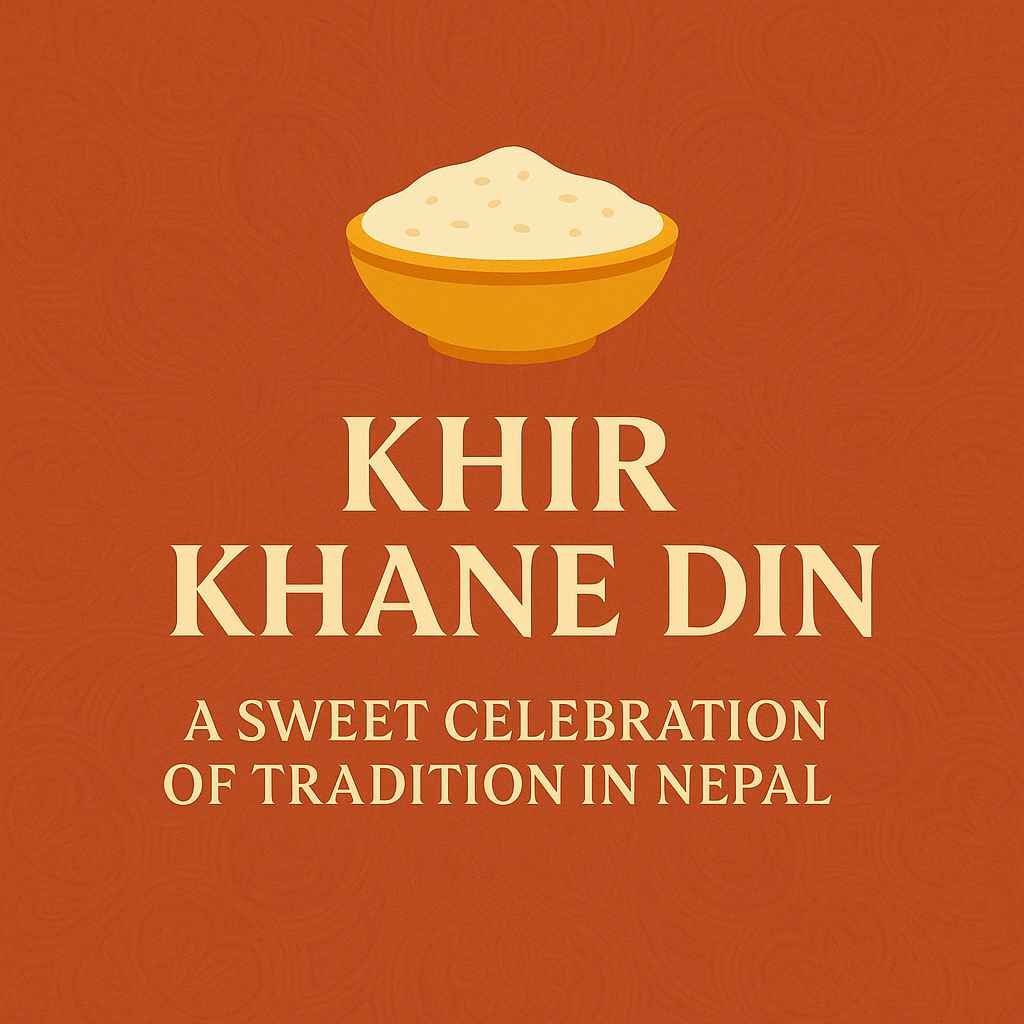In Nepal, food isn’t just a source of nourishment—it’s a way of preserving culture, bonding with family, and celebrating spirituality. Among the many traditional food-centric festivals, Khir Khane Din holds a special place in the hearts of Nepalis. Literally translated as “The Day to Eat Rice Pudding,” Khir Khane Din is a flavorful festival that goes beyond just enjoying a sweet dish. It marks the end of the rice planting season and the beginning of a well-earned rest for farmers and families across the country.

Khir Khane Din
Let’s dive into the significance, history, and celebration of Khir Khane Din, and why you should experience this delicious day if you’re traveling in Nepal during mid-July.
What is Khir Khane Din?
Khir Khane Din is celebrated on the 15th day of the Nepali month of Ashar (typically in mid-July). It marks the completion of the rice planting season known as Ropain and celebrates the hard work of farmers with a comforting bowl of khir, or rice pudding.
While the festival doesn’t involve large gatherings or public rituals like Dashain or Tihar, it is deeply rooted in Nepali households and farming communities. The day is a reminder of the connection between humans, food, and the land.
Why Khir?
Khir is a simple yet sacred dish made from rice, milk, ghee, and sugar. It is often flavored with cardamom, nuts, or dried fruits. In Hindu culture, khir is considered pure and auspicious, often offered to deities during pujas and religious ceremonies.
Eating khir on this specific day is believed to bring good fortune, prosperity, and blessings for a good harvest.
Fun Fact: In many homes, khir is paired with spicy side dishes like pickle (achar) or curry to balance out the sweetness.
The Monsoon & Ropain Connection
The timing of Khir Khane Din is not accidental. By Ashar 15, the majority of the rice fields across Nepal have been planted during the early monsoon rains. Ropain (rice plantation) is back-breaking work, and this day serves as a symbolic pause—a time to celebrate labor, eat well, and rest.
For travelers, this also marks a great moment to visit rural areas and witness the rich agricultural traditions of Nepal.
How Nepali Families Celebrate Khir Khane Din
Though there are no temples involved, this day is deeply family-oriented. Here’s how most families celebrate:
Early Morning Prep: Women in the household prepare the khir using fresh milk, rice, ghee, and spices.
Home Blessings: Many families light incense and offer a small portion of khir to gods or the family shrine.
Shared Meals: Families eat together, and some share khir with neighbors and relatives as a sign of goodwill.
Cultural Storytelling: Elders may recount old folk tales or explain the significance of the season.
Traveler Tip: If you’re staying with a Nepali family or in a homestay during Ashar 15, don’t be surprised if you’re served a warm bowl of khir with love!
Best Places to Experience Khir Khane Din
If you want to immerse yourself in the culture during Khir Khane Din, here are some suggestions:
Kathmandu Valley: Experience urban traditions and family customs.
Pokhara & Chitwan: Participate in local farming celebrations and enjoy khir with villagers.
Rural Hill Regions: Join in post-ropain feasts with local communities—especially rewarding for cultural travelers and volunteers.
Why Travelers Should Care About Khir Khane Din
As a visitor, understanding and engaging in such micro-festivals offers you:
Deeper Cultural Immersion: It’s a chance to witness how daily life and seasonal changes shape Nepali culture.
Tasting Traditional Food: Homemade khir is a comfort dish that speaks volumes about Nepali hospitality.
Authentic Experiences: You’ll experience a less-commercialized, more heartfelt celebration compared to mainstream festivals.
Want to Try Making Khir at Home?
Here’s a quick recipe you can try—even if you’re not in Nepal!
Ingredients:
1 cup rice (preferably short-grain)
1 liter full-fat milk
3 tbsp sugar (or as per taste)
1 tbsp ghee
Cardamom, nuts, and raisins for flavor
Instructions:
Wash the rice and soak it for 20 minutes.
In a heavy pot, boil the milk and add rice.
Stir continuously and let it simmer on low heat for 40–45 minutes.
Add sugar, ghee, and cardamom.
Garnish with nuts and serve warm or chilled.
Khir Khane Din may not be the most famous Nepali festival, but it’s one of the most heartfelt. It embodies gratitude for food, for nature, and for each other. Whether you’re in a bustling city like Kathmandu or a peaceful village in the hills, celebrating this sweet tradition offers a taste of Nepal’s soul.
So, next time you’re in Nepal during Ashar, don’t forget to ask for a bowl of khir. It’s more than a dessert—it’s a celebration in every spoonful.


